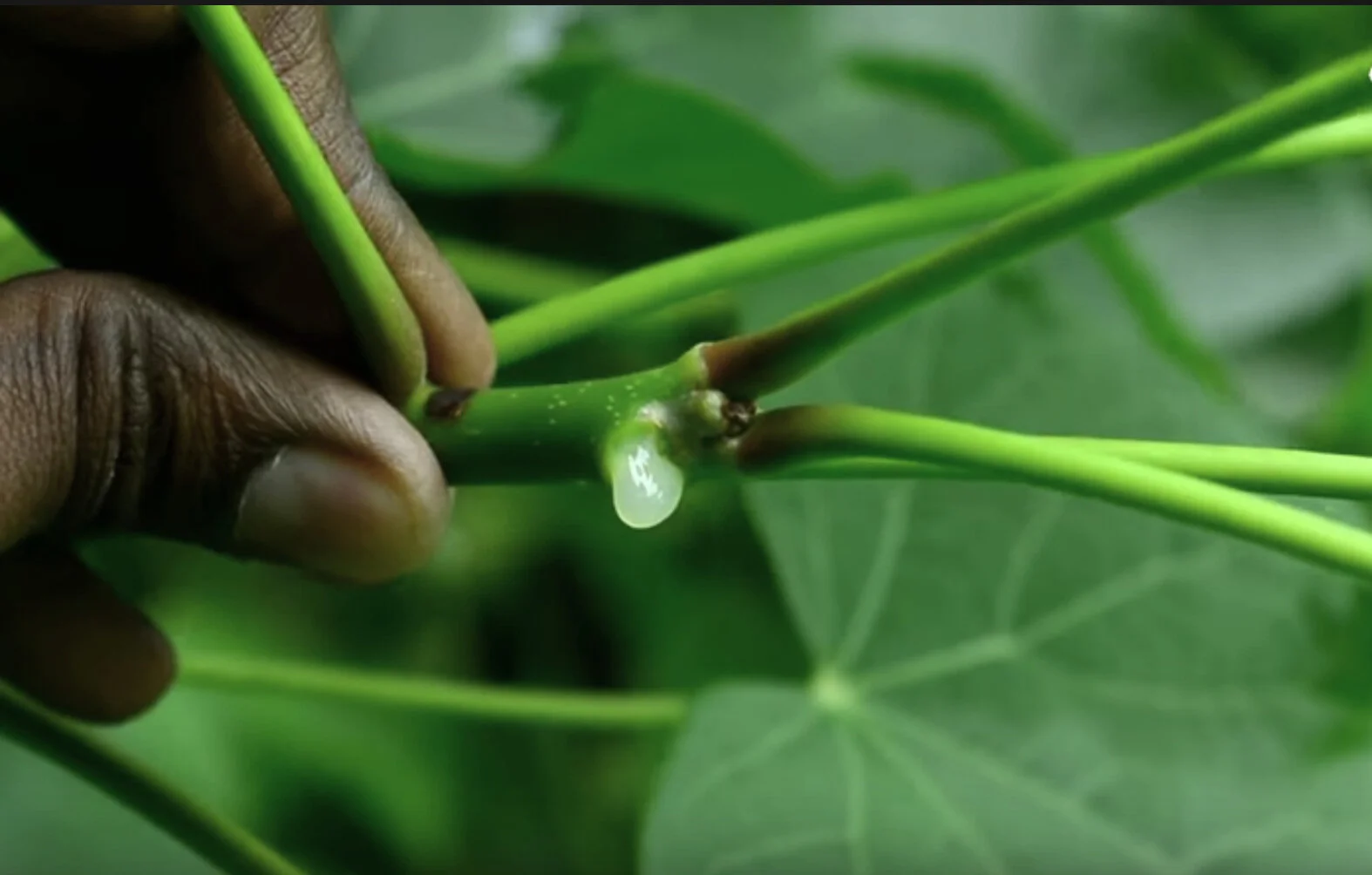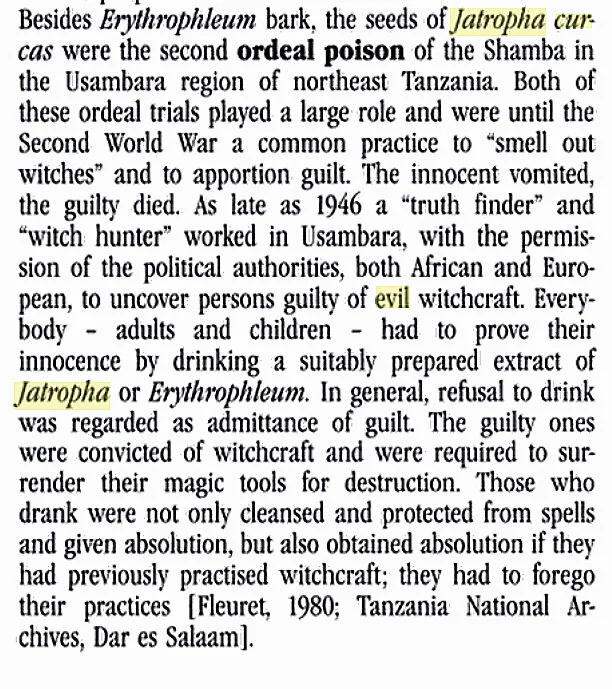
JATROPHA CURCAS: SPIRITUAL TRADITIONS
MILKING AND BLEEDING
When you pick a leaf, the latex looks like milk…
If you pierce the trunk, the sap drips out like blood…
It’s ironic that the seemingly human qualities of the tree—milking and bleeding— are precisely what makes this tree seem “supernatural.”
WARDING OFF EVIL
For centuries, this tree has been seen as a protector, able to repel bad spirits.
In Zimbabwe, “the Jatropha plant is being planted around homesteads to prevent the entry of snakes. It is strongly believed that the plant repels evil spirits. It is also used to settle disputes when matters are brought before traditional leaders. If an accused person swallows a concoction and does not vomit, he is presumed guilty.” (1)
In Trinidad and Tobago,
“most people knew that [Jatropha curcas]…was a deterrent against all kinds of evil spirits, including the soucouyant or bruja. This plant was placed at strategic spots of the person’s property, particularly at the entrance or at its four corners to avoid access beyond that point.” (2,3)
“It was the practice in Jamaica to bury a [Jatropha curcas] in a field, to keep a neighbor’s envious (and therefore evil) eye from a good field crop.” (4)
EASTER TRADITION
As European colonizers forced Christianity upon indigenous and enslaved peoples, many converts adapted their beliefs around the Jatropha curcas (physic nut tree) to coincide with their new religion. To this day, the Jatropha curcas continues to be a part of Easter traditions throughout Central and South America and the Caribbean.
On Good Friday, the trunk of the tree is pierced with a knife to allow the plant’s red sap to flow, representing Christ’s crucifixion.
Read more about Jatropha Curcas below:
SOURCES
Karavina, Charles & Zivenge, Emmanuel & Mandumbu, Ronald & Parwada, Cosmas. Jatropha curcas Production in Zimbabwe: Uses, Challenges and the Way Forward. Modern Applied Science. (2011).
Kublalsingh, Sylvia Moodie. The Cocoa Panyols of Trinidad: an Oral Record. British Academic Press, 1994.
Winer, Lise. Dictionary of the English/Creole of Trinidad & Tobago: On Historical Principles. McGill-Queen's University Press, 2014.
D.C. Watts. Dictionary of Plant Lore, Academic Press, 2007, pp. 294–295
Fleuret, A. Nonfood uses of plants in Usambara. Econ. Bot. 34. 1980, pp. 320-333.






